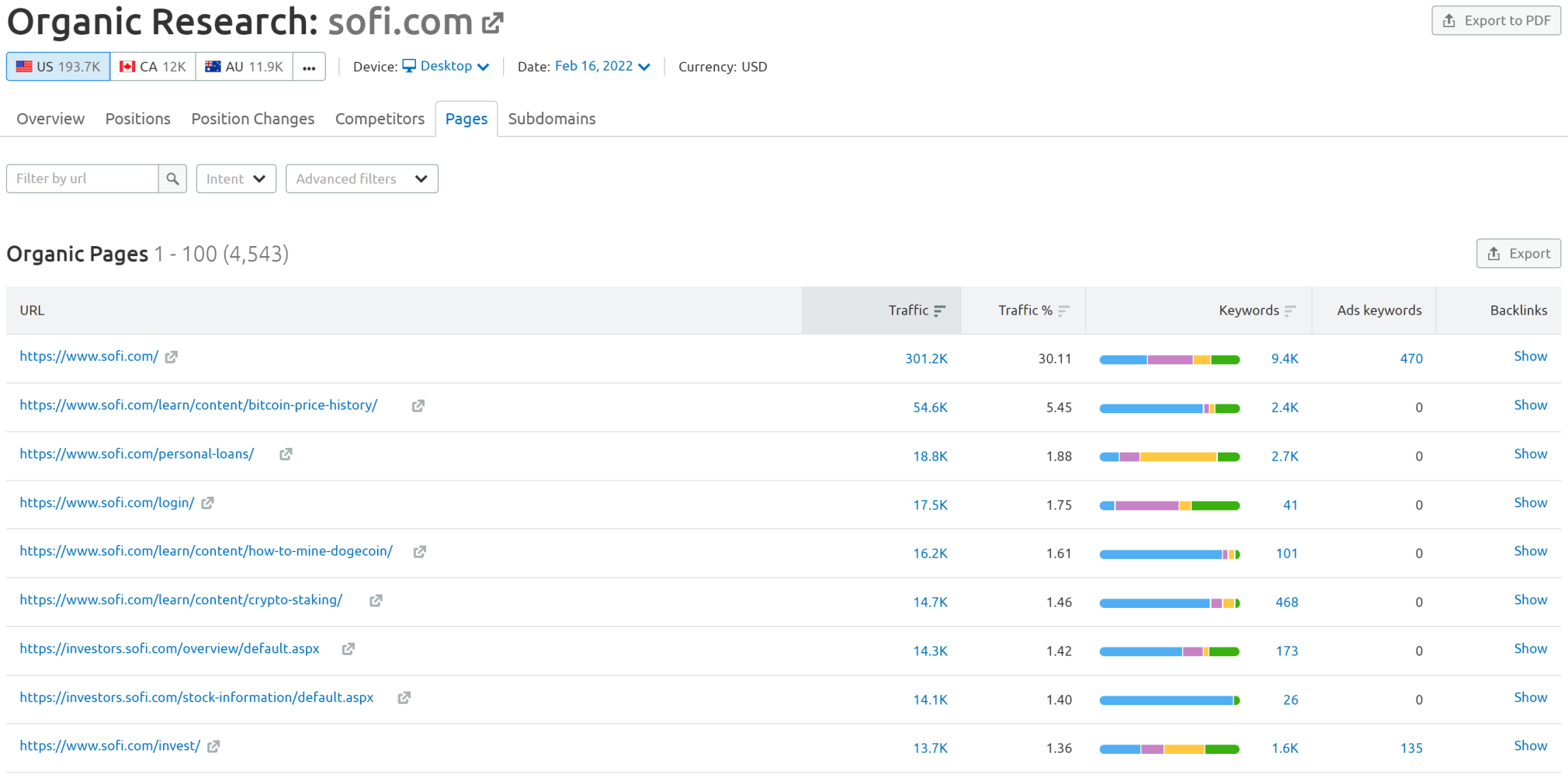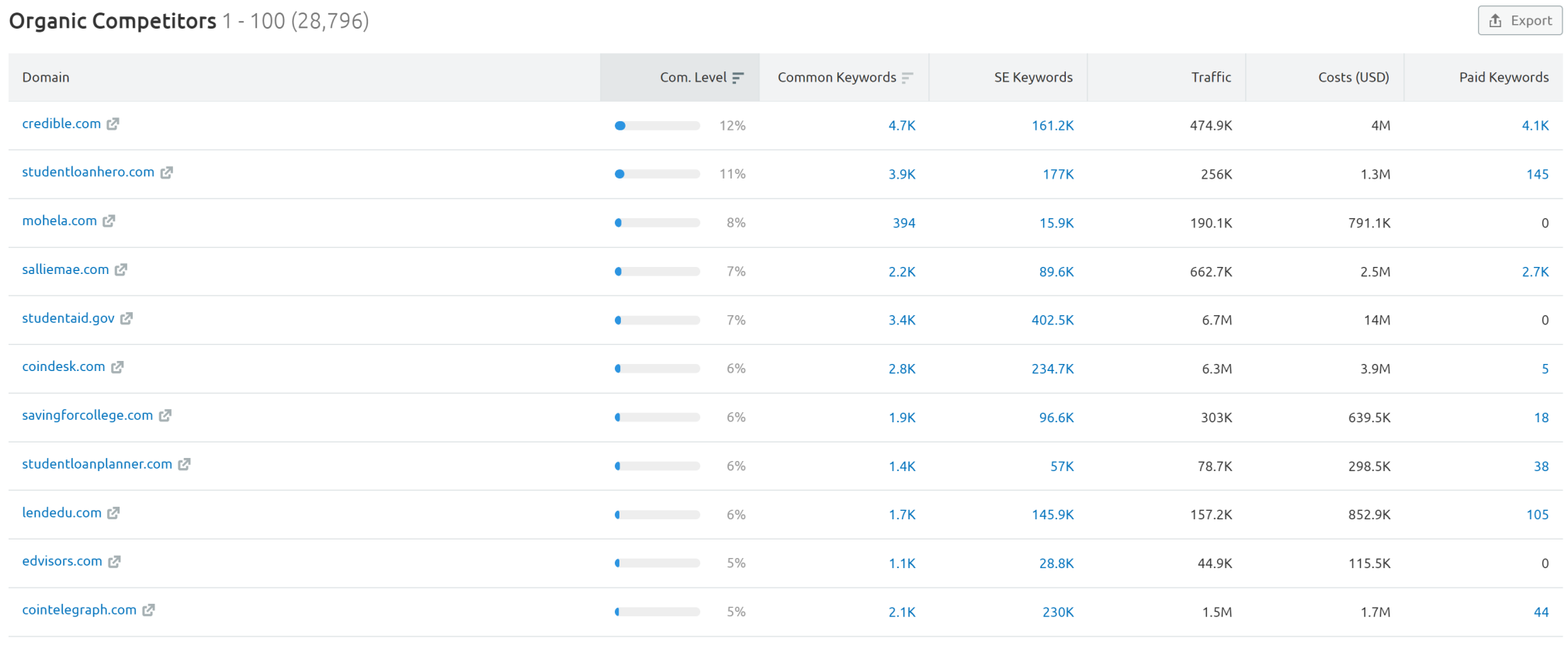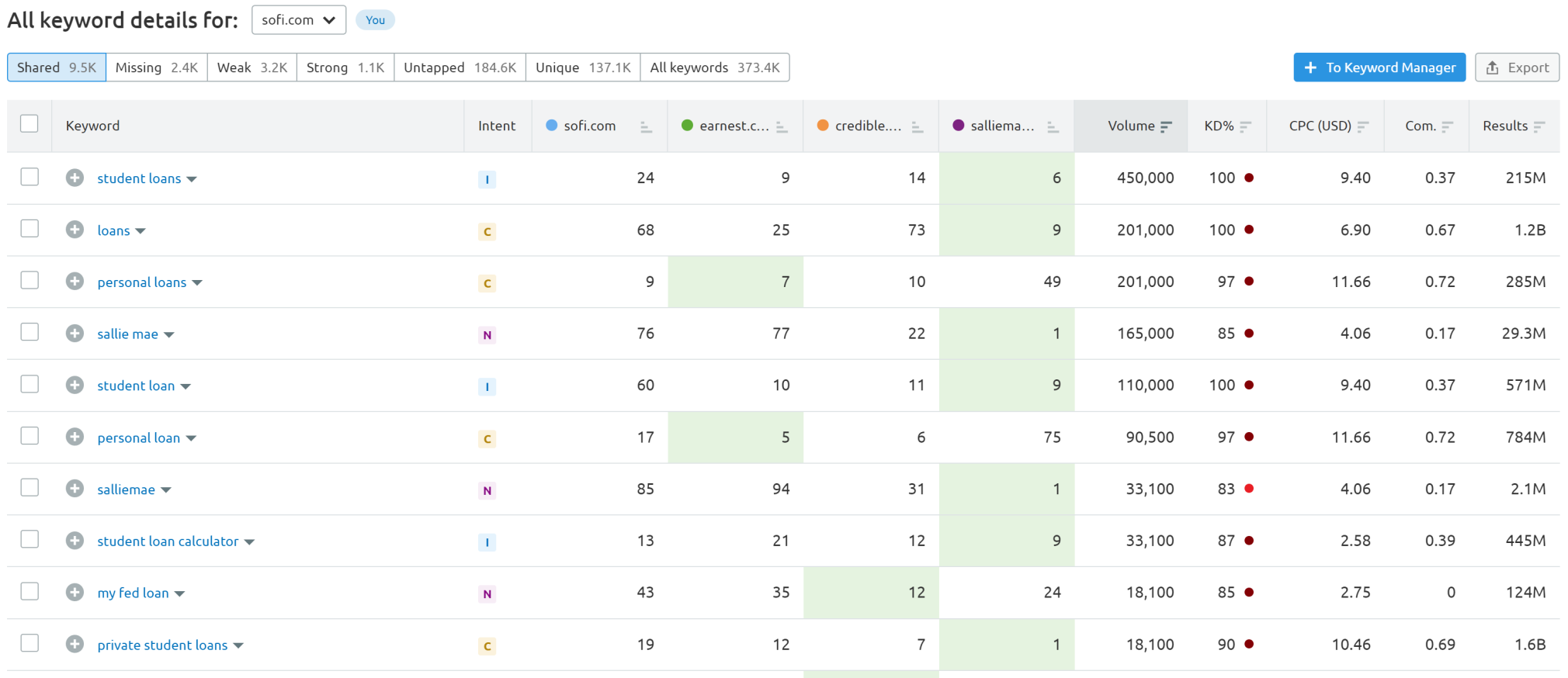Hey follows! Welcome to celoris designs .Are you looking to bost organic leads on your website , don’t know how , today we will disuciss some comoon ways of boost the oragnic leads so lets start
in order to increase your site’s organic traffic in 2022. You won’t just find on-page SEO tactics here, but off-page ones as well. By working on some of these SEO best practices you’ll be able to work on improving your visibility and traffic.
1. Find Your Competitors’ Best Performing Pages
The more you know about your competitors’ SEO strategy, the better your own site can perform.
When you take the time to figure out what’s working for the websites you compete against on the SERPs, you can take your analysis to the next level and understand why this approach is working before using this insight to inform your own approach.
One effective starting point is to find your competitors’ best-performing pages so that you can develop a picture of where their organic traffic is coming from, and what it’s being driven by. Analyzing your competitors’ top pages can point you in the direction of things like
- A content/keyword gap
- A link gap
- An opportunity to improve your existing content
- Keyword cannibalization
How do you find your competitors’ best pages? You can use Semrush’s Organic Research tool and enter the URL of a competitor.

This will show you the site’s estimated organic traffic and a general overview of performance, but you want to dive deeper here.
Open the ‘Pages’ tab on this screen and sort by traffic, and you’ll see which pages are organically performing on this domain.

This is simply a way to find out the pages that are driving the most traffic to competing websites. You’ll need to take this insight to the next level to figure out why these pages perform and how you can form a strategy that steals some of this traffic.
Think of this as an opportunity analysis or a shortcut to figuring out where your biggest wins could be based upon competitor activity, rather than starting with keyword research.
This works because it helps you to determine potential areas to focus your efforts on at a page-level, rather than at a specific keyword-level. This exercise can also help you to find other websites that compete against your own, too, that you perhaps hadn’t considered to be a competitor.
Head to the Competitors tab on the same tool and you’ll see a list of competing domains, as well as insights into the number of common keywords and estimated traffic

You can then analyze these domains individually using the tool to build up a detailed level of insight into the pages that perform the best in your industry.
2. Inform Your Content Strategy Using a Keyword Gap Analysis
When it comes to creating a content strategy, you will typically have two main focus areas:
- Optimizing existing content
- Creating new content
While optimizing existing content is often the most effective starting point, using a local rank tracker is often an effective starting point, most websites will get to a stage where they’ve optimized all of their existing pieces.
At this point, your efforts should turn to the creation of new content. But one of the biggest mistakes that SEOs make when creating content is doing so blindly.
You need to be creating content with a purpose and need to be able to justify why every single piece that you create exists. This means taking the time to carefully plan out a strategy for the creation of new content.
One of the quickest ways to steer your content plan is to conduct a keyword gap analysis that will help you to see the keywords that your competitors rank for but that you don’t. From there, you can create content around these keywords and topics to fill the gap. And you can do it faster and more efficiently with dedicated SEO tools.
Head to the Semruh Keyword Gap tool and enter your own domain alongside up to four competitors’. Ensure that ‘Organic keywords’ is selected.

Hit ‘Compare’ and you’ll see a detailed insight into keyword opportunities. But we particularly want to pay attention to the comparison grid.

See the filters at the top of the grid?
These can help you to find keywords gaps in conjunction with the table headings.
‘Missing’ lets you see the keywords that all of your competitors rank for, but that you don’t, whereas ‘Untapped’ shows keywords that at least one of the other’s ranks for.
The recommendation here is to filter either by ‘volume’ or ‘KD%’ (keyword difficulty) depending on whether you have sufficient site authority to compete for high-volume search queries. If you’re a new site, as an example, you may want to target lower KD% search terms.
You can use these keyword gaps to inform your content strategy and help you to create content that competitors are ranking with but that you don’t currently have in place.
3. Use Digital PR to Earn Authority Backlinks
One of the biggest challenges that SEOs face is how to earn authority backlinks at scale.
Backlinks remain one of Google’s top ranking factors, and while there are many different link building strategies that can help you to successfully earn relevant links, the fact remains that many tactics are difficult to scale effectively.
When we look at Google’s link schemes guidelines, the recommendations are clear:
The best way to get other sites to create high-quality, relevant links to yours is to create unique, relevant content that can naturally gain popularity in the Internet community. Creating good content pays off: Links are usually editorial votes given by choice, and the more useful content you have, the greater the chances someone else will find that content valuable to their readers and link to it.
And one tactic that can help you to earn editorially placed links through the creation of awesome content is digital PR.
Think of this as creating and promoting content to journalists and publishers that they’ll want to cover and link to from within their articles. Content such as:
- Infographics
- Research studies
- Tools and calculators
- Expert insights
But really, it’s all about thinking like a PR and executing like an SEO. Digital PR isn’t about pitching out promotional pieces with a press release, rather promoting linkable assets with a solid outreach strategy. The real appeal here is that the right story can deliver significant numbers of editorially earned links from publications where your next customer could be hanging out online.
Digital PR brings benefits beyond just links, including:
- Driving referral traffic
- Creating social engagement
- Increasing brand awareness
- Putting you in front of your customers when they’re consuming content online
- Generating sales
Here’s a great guide to help you to learn more.

